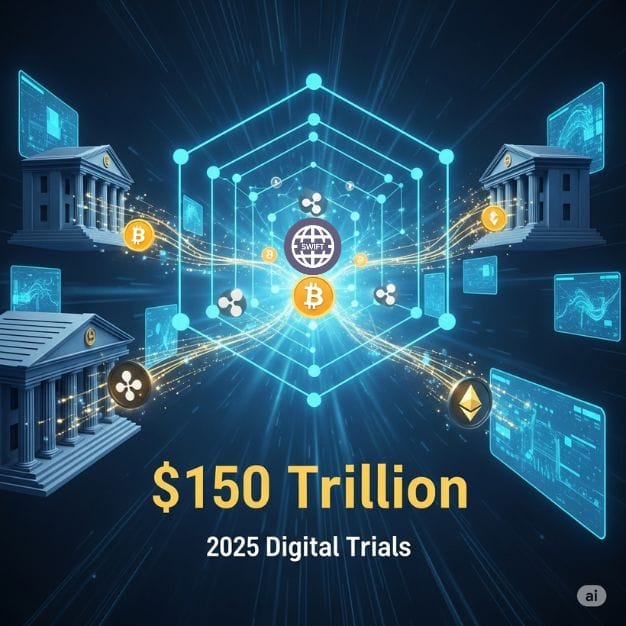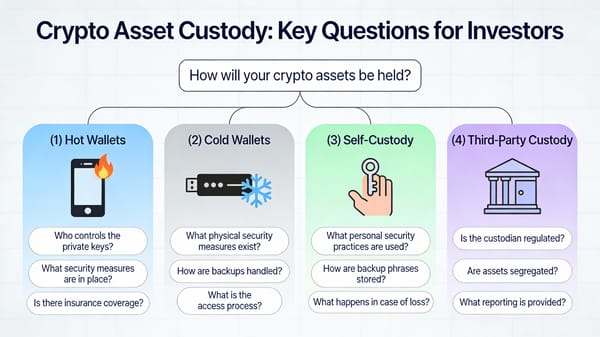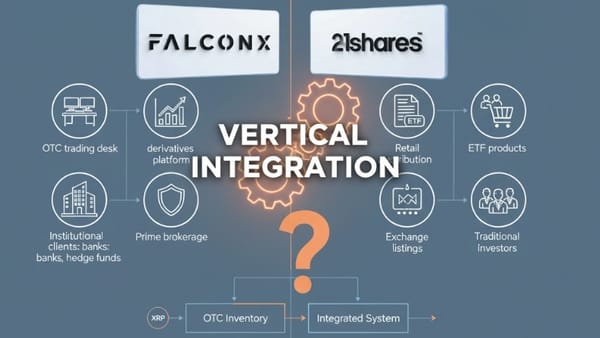SWIFT Launches Revolutionary Digital Asset Trials
SWIFT launches groundbreaking digital asset trials in 2025 across its $150 trillion network. Banks in North America, Europe & Asia will test blockchain integration, potentially revolutionizing cross-border payments. Major opportunity for XRP & crypto adoption in traditional finance.

SWIFT is finally entering the digital age. Starting in 2025, the global financial messaging giant will begin live trials of digital asset transactions across its massive $150 trillion network, marking a pivotal moment in financial history.
Traditional Finance Meets Blockchain Innovation
The Society for Worldwide Interbank Financial Telecommunication announced that banks across North America, Europe, and Asia will participate in live trials of digital asset and currency transactions starting next year. This represents a dramatic shift from experimental testing to real-world implementation across SWIFT's network of over 11,500 financial institutions.
Tom Zschach, Chief Innovation Officer at SWIFT, emphasized the significance: "For digital assets and currencies to succeed on a global scale, it's critical that they can seamlessly coexist with traditional forms of money. With our vast global reach, we are uniquely positioned to bridge both emerging and established forms of value".
The trials will focus on multiple use cases including payments, foreign exchange, securities, and trade transactions. Initial applications will enable multi-ledger Delivery-versus-Payment (DvP) and Payment-versus-Payment (PvP) transactions, addressing fundamental challenges in cross-border settlements.
Breaking Down Digital Islands
The initiative tackles a critical problem in today's fragmented digital asset landscape. SWIFT notes that rapid growth of unconnected platforms has created an "increasingly fragmented landscape" of "digital islands" that presents significant barriers to global adoption. The trials aim to interconnect these disparate networks with existing fiat currencies.
Currently, 134 countries are exploring Central Bank Digital Currencies (CBDCs), while the tokenized assets market is projected to reach $30 trillion by 2034 according to Standard Chartered and Synpulse. SWIFT's infrastructure could become the bridge that unifies these emerging systems with traditional finance.
Market and Regulatory Implications
This development arrives at a crucial moment for the crypto industry. Traditional financial institutions have been cautious about embracing digital assets due to regulatory uncertainty and technical challenges. SWIFT's involvement provides institutional legitimacy and could accelerate mainstream adoption.
The Hong Kong Monetary Authority and Banque de France are already using SWIFT's capabilities in ongoing experiments for foreign exchange use cases, as part of the European Central Bank's initiative to explore new technologies for wholesale payments. Additionally, SWIFT was recently named a participant in Project Agora, led by the Bank for International Settlements, which seeks to integrate tokenized commercial bank deposits and wholesale CBDCs on a unified platform.
The regulatory landscape appears increasingly favorable, with multiple jurisdictions working toward clearer frameworks for digital asset integration within traditional financial systems.
XRP and Ripple: The Natural Choice for SWIFT Integration
This development could be transformative for XRP and Ripple's ecosystem, and there are compelling reasons why XRP emerges as the most logical candidate for SWIFT's digital asset trials. For years, Ripple has positioned itself as a SWIFT alternative, developing On-Demand Liquidity (ODL) solutions for cross-border payments using XRP as a bridge currency.
Why XRP Makes Strategic Sense
XRP's design aligns perfectly with SWIFT's requirements for high-volume, institutional-grade transactions. The XRP Ledger processes settlements in 3-5 seconds with transaction fees of approximately $0.0002, making it ideal for the rapid, cost-effective transfers that SWIFT's network demands. Unlike many cryptocurrencies built for retail adoption, XRP was specifically engineered for financial institution use cases.
Ripple's existing relationships provide another crucial advantage. The company already works with over 300 financial institutions globally through RippleNet, including major banks like Santander, American Express, and Standard Chartered. Ripple has consistently described XRP as a bridge currency that addresses cross-border liquidity challenges, specifically reducing dependence on pre-funded nostro/vostro accounts.
Most importantly, Ripple has historical experience working with SWIFT. In 2023, Ripple participated in an interoperability pilot program conducted by SWIFT to integrate blockchain in cross-border payments. This existing relationship positions XRP favorably for deeper integration.
Alternative Options and Their Limitations
While SWIFT's trials could benefit other digital assets, most lack XRP's institutional focus and technical specifications:
Stellar (XLM) offers similar settlement speeds and low costs, but lacks Ripple's extensive banking partnerships and regulatory clarity. Stellar's focus on financial inclusion in developing markets, while valuable, doesn't align as closely with SWIFT's primarily institutional, high-value transaction network.
Hedera (HBAR) provides fast consensus and low energy consumption, but its governance model through the Hedera Council may not offer the decentralization that many central banks and regulators prefer for critical financial infrastructure.
Bitcoin and Ethereum, despite being the largest cryptocurrencies, face scalability challenges that make them unsuitable for SWIFT's transaction volumes. Bitcoin's average transaction fee of $20-30 and Ethereum's gas fee volatility create cost uncertainties incompatible with institutional settlement requirements.
Stablecoins like USDC and USDT offer price stability but don't solve the liquidity challenges that XRP addresses. They still require pre-funded accounts and don't provide the same capital efficiency benefits for financial institutions.
Central Bank Digital Currencies (CBDCs) represent the most direct alternative, but their fragmented development across different jurisdictions creates interoperability challenges. Currently, 134 countries are exploring CBDCs, but most remain in experimental phases without the mature infrastructure needed for immediate SWIFT integration.
XRP's Competitive Advantages
XRP's unique value proposition centers on its role as a neutral bridge asset that doesn't compete with sovereign currencies. Unlike CBDCs tied to specific nations or stablecoins pegged to particular fiat currencies, XRP can facilitate transactions between any currency pair without political or jurisdictional complications.
The recent legal clarity following Ripple's settlement with the SEC in 2024 removes regulatory uncertainty that has historically hindered institutional adoption. This positions XRP as the most legally compliant option for regulated financial institutions.
SWIFT's embrace of digital assets validates Ripple's long-term vision while potentially creating collaboration opportunities rather than pure competition. Ripple CEO Brad Garlinghouse has previously projected that XRP could capture 14% of SWIFT's transaction volume within five years, which would represent approximately $21 trillion in annual value.
Recent analysis suggests even more ambitious scenarios. New projections indicate XRP could potentially process up to 20% of SWIFT's transactional volume, translating to approximately $30 trillion in annual value flowing through the XRP Ledger. Such adoption would fundamentally transform XRP's utility and market position.
For XRP's price outlook, analysts estimate that handling 14% of SWIFT volume could drive XRP prices to approximately $11.90 based on utility alone, with speculative interest potentially pushing valuations to $17.85-$23.81. More aggressive adoption scenarios project even higher targets.
Looking Ahead: A New Financial Era
SWIFT's digital asset trials represent more than technological advancement—they signal the beginning of a new era in global finance. The integration of traditional banking infrastructure with blockchain technology could unlock unprecedented efficiency, transparency, and accessibility in international payments.
As the trials progress through 2025, market participants will closely monitor adoption rates, technical performance, and regulatory responses. Success could accelerate the timeline for widespread digital asset integration across the global financial system, potentially reshaping how value moves across borders.
Key Takeaways:
- SWIFT begins live digital asset trials in 2025 across its $150 trillion network
- Initiative addresses fragmentation between traditional finance and digital assets
- Major opportunity for XRP/Ripple and other blockchain payment solutions
- Could fundamentally transform cross-border payments and settlement systems
Sources
- SWIFT Official Announcement - Live trials of digital asset transactions
- SWIFT Press Release - Global banks to use Swift for trialling live digital asset transactions
- Ledger Insights - Swift to start live digital asset trials
- Bloomberg - Banks Set to Use Swift for Token Transactions
- Global Custodian - Swift to launch live trials for digital asset transactions
DISCLAIMER: This newsletter is for informational purposes only and does not constitute investment advice or a recommendation to buy, sell, or hold any securities. Investments in cryptocurrencies or other financial assets carry significant risks, including the potential for total loss, extreme volatility, and regulatory uncertainty. Past performance is not indicative of future results. Always consult a qualified financial professional and conduct thorough research before making any investment decisions.



